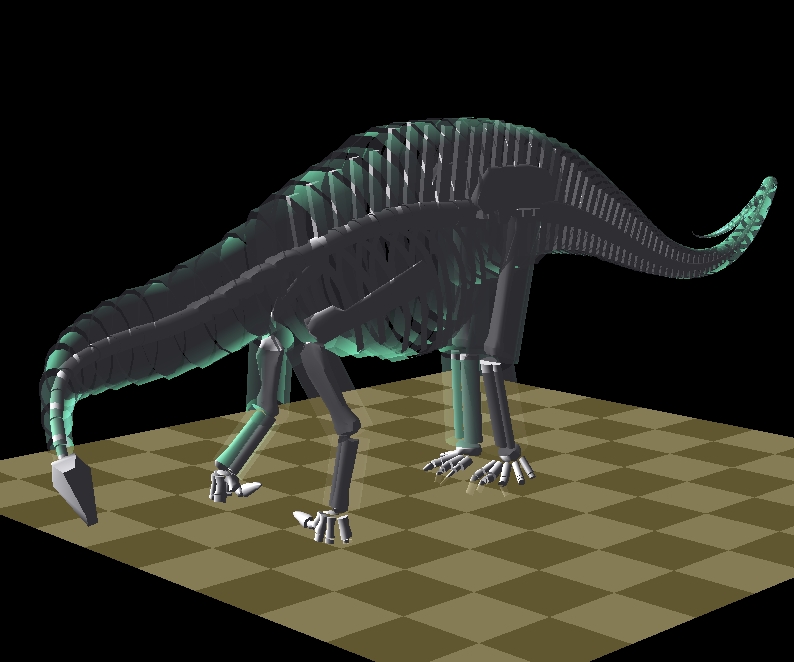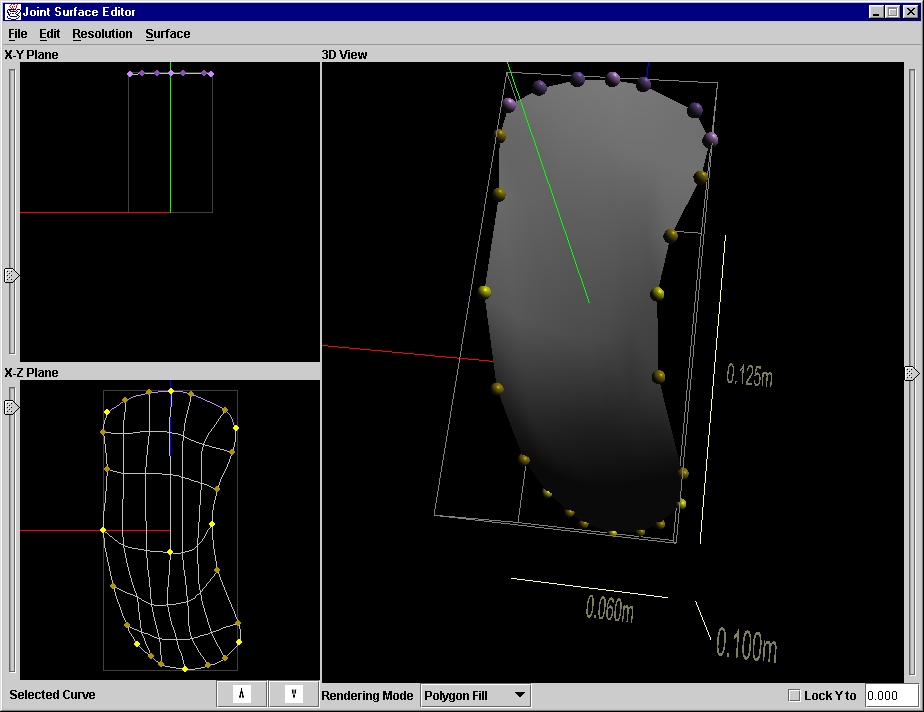
Stevens, Kent A., & Wills, Eric D.
Department of Computer and Information Science
University of Oregon, Eugene, OR 97403
AbstractSauropod necks with broad, robust vertebrae (e.g. Camarasaurus and Apatosaurus) differ in biomechanical design compared to the more gracile forms (e.g. Diplodocus, Barosaurus, and Euhelopus). Caudally, where the design differences are generally most pronounced, the robust form has wide-set, flat, nearly horizontal zygapophyses, while the gracile form has narrow-set zygapophyses that curve through nearly 90 degrees (horizontal laterally yet near vertical medially). Quantitatively, diapophysis width wd can be compared to posterior centrum width wc and to centrum length lc. In Apatosaurus, maximum wd/wc is about 3.0 at the tenth cervical vertebra, C10, while in the more gracile Diplodocus and Barosaurus vertebrae that ratio is substantially less, with a maximum of 1.9. Likewise, wd/lc in Apatosaurus ranges from just under 1.0 at C5 to 2.2 at C15 compared to a range of 0.4 (at C5) to 0.7 caudally. If the pronounced width in the robust form provides stabilization against axial torsion load during mediolateral deflection (the Chinese toy snake problem), how was stability achieved in the longer yet narrower 6 m neck of Diplodocus or the extraordinary 9 m neck of Barosaurus? Biomechanical modeling and articulation of the cervical vertebrae of gracile design using the DinoMorph software reveals how torsional stability might have been achieved at the extremes of mediolateral deflection without the need for massive buttressing at the base of the neck. |

|
Consider the Very Long-Necked
Apatosaurus (of robust design) is far "stouter" than those of gracile design:
|
Robust Zygapophyseal DesignThe robust design is exemplified by zygapophyses that are large, with subtriangular outline, that are mediolaterally elongate, nearly planar, and nearly horizontal (e.g. mid-to-caudal cervicals in Apatosaurus, Dicraeosaurus). Representative prezygapophyses of Apatosaurus (from Stevens & Parrish, 1999): The postzygapophyses are similar to, larger than, and nearly parallel to prezygapophyses. C15 (anterior) C7 (posterior) Gracile Zygapophyseal DesignIn contrast to the large, approximately flat zygapophyses of robust design, the gracile design (e.g. in the mid-to-caudal cervicals in Barosaurus, Diplodocus, Euhelopus) is curved through roughly 90 degrees, i.e. from nearly vertical medially to nearly horizontal laterally. Representative prezygapophyses of Diplodocus (from Stevens & Parrish, 1999): The postzygapophyses are similar to and larger than prezygapophyses. C13 (anterior) C12 (posterior) The Chinese Toy Snake ProblemA neck undergoing lateral deflection creates progressive loads and potential control instability. Robuse vertebral design provides torsional bracing, but at a cost. How does the gracile vertebral design achieve torsional bracing? MethodsZygapophyses and vertebrae modeled parametrically. Vertebrae articulated using DinoMorph. Models of robust zygapophyses generalized from C14 and C15 of Apatosaurus louisae. Gracile zygapophyses based on C13 and C14 of Diplodocus carnegii. Separation between zygapophyseal computed at sampled points on the prezygapophysis. Pseudocolor indicates proximity (red = closest). Diplodocus CM 84 Apatosaurus CM 3018 |

ResultsRobust postzygapophyses glide across the prezygapophyses without interference during dorsoventral flexion as shown here:
Axial flexion (due to torsional load) causes locking after only a few degrees of rotation, as shown here:
During dorsoventral flexion, gracile postzygapophyses maintain close proximity medially with the prezygapophyses but are unhindered at extremes of movement, as shown here:
During mediolateral flexion, the postzygapophyses lock bilaterally against the prezygapophyses at extremes of lateral travel, or just a few degrees of axial flexion as shown here:
Contrary to A. S. Romer (Osteology of the Reptiles, 1956):
... we find that the designs can, in principal, support equal ranges of motion. Conclusions
|
Copyright © 2011 Kent A. Stevens, University of Oregon